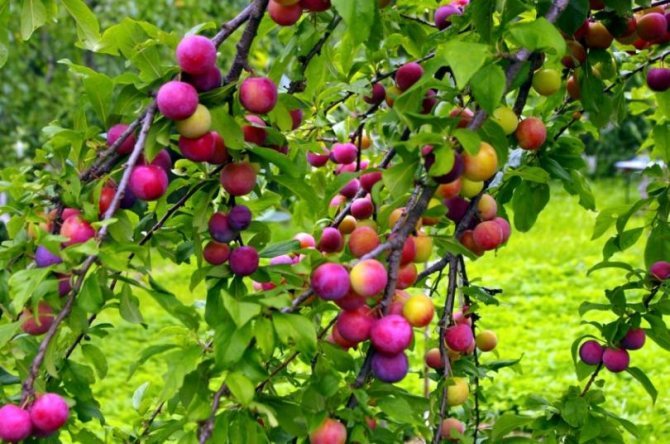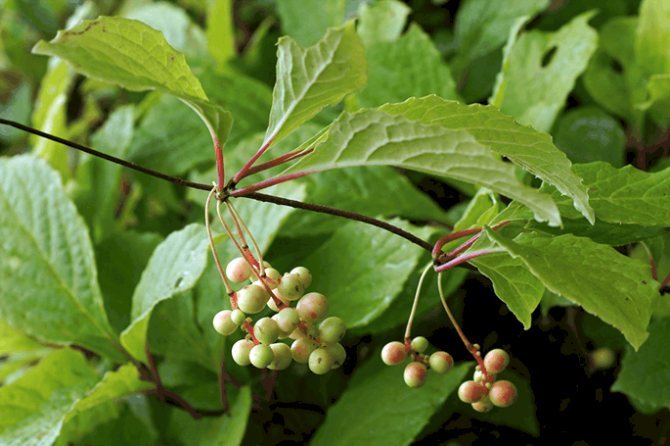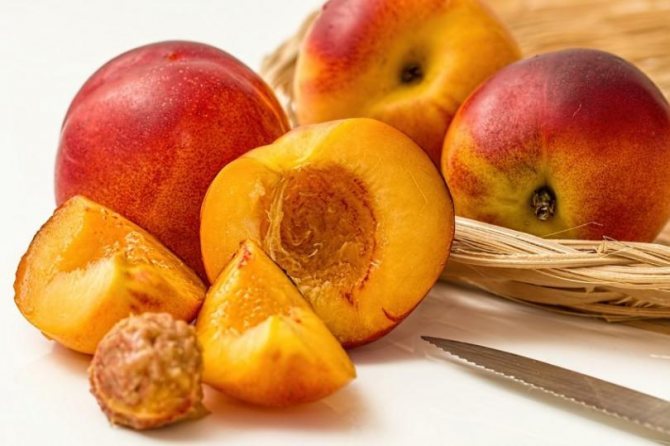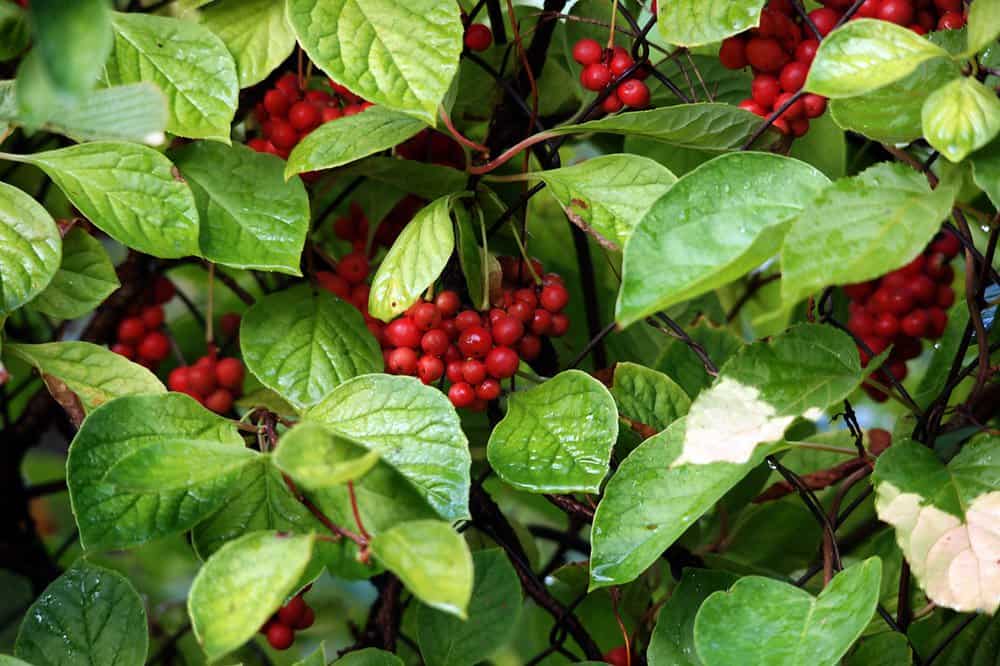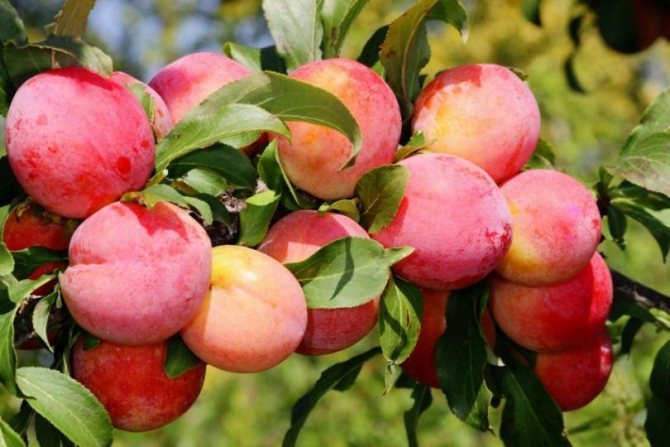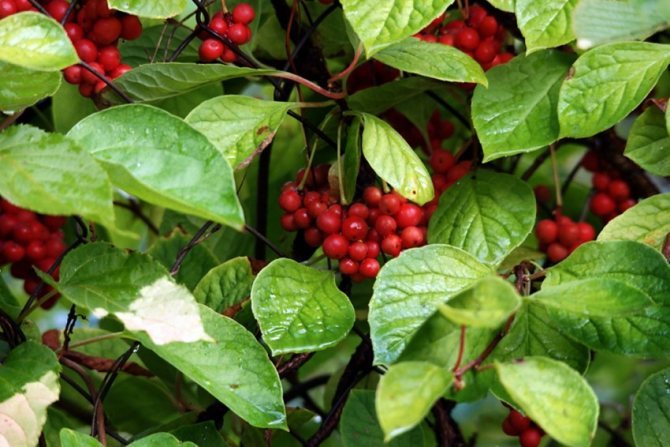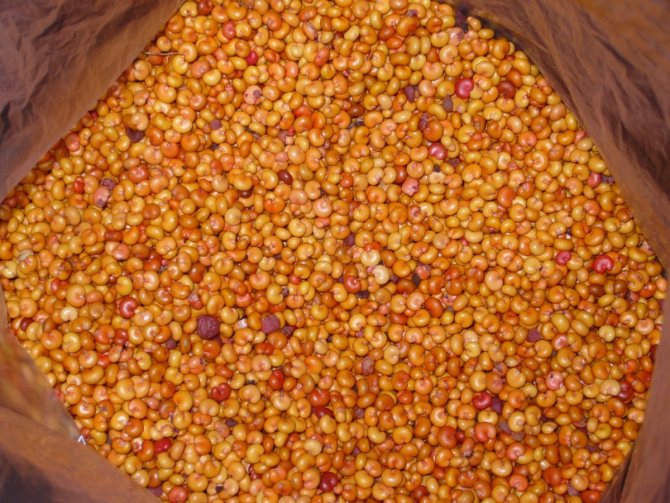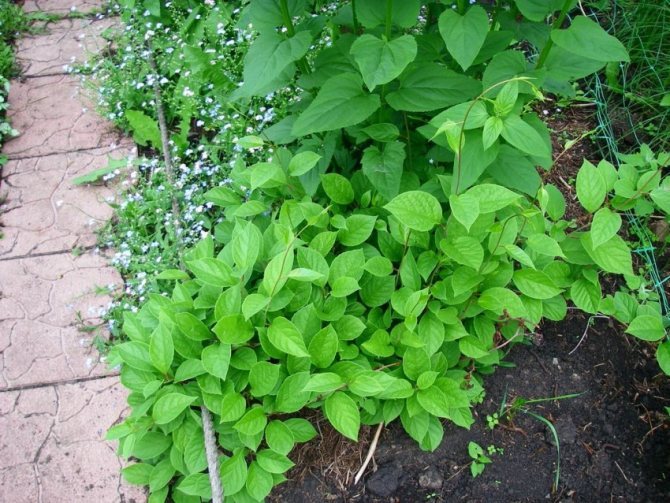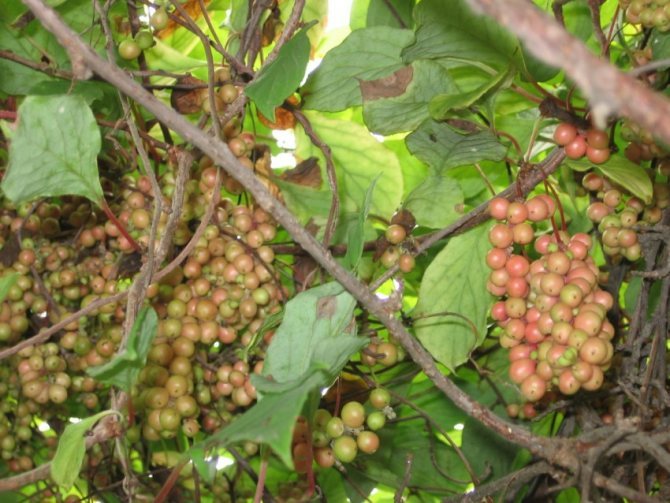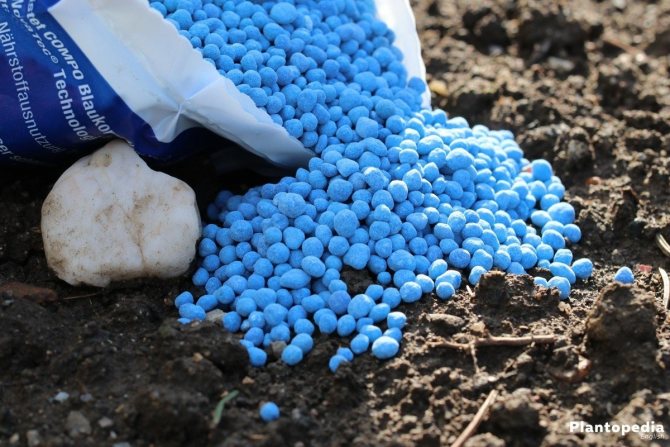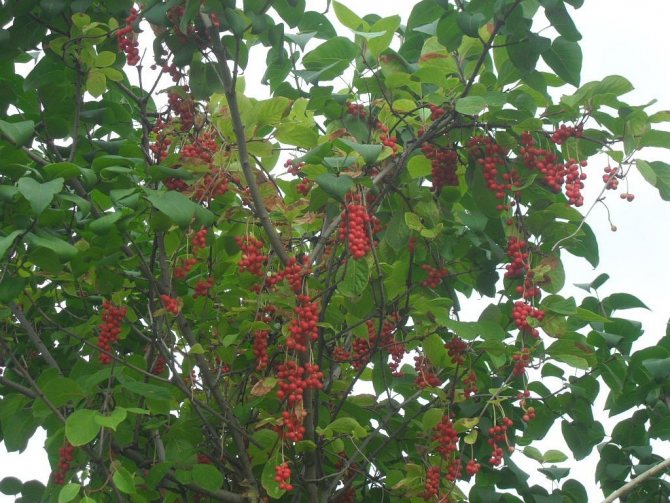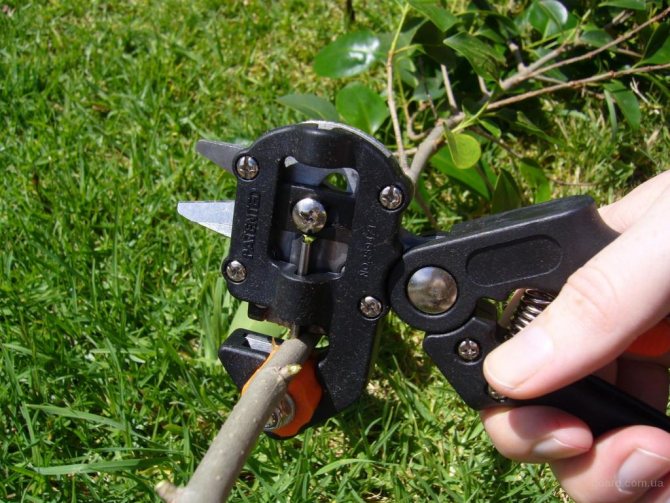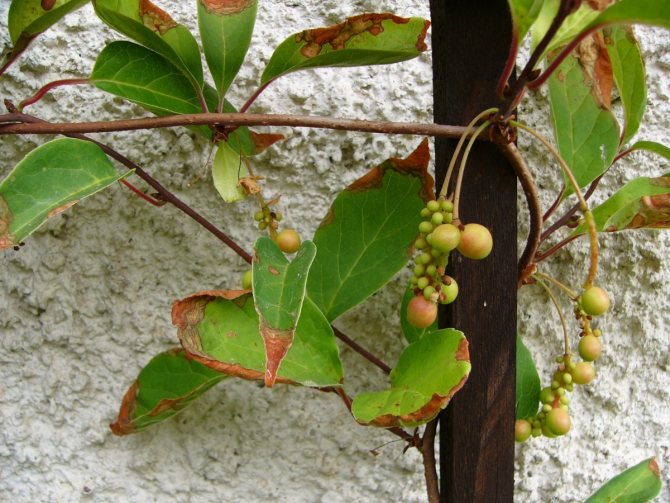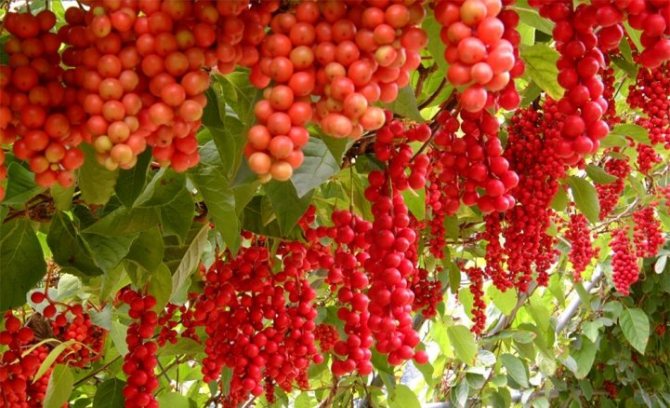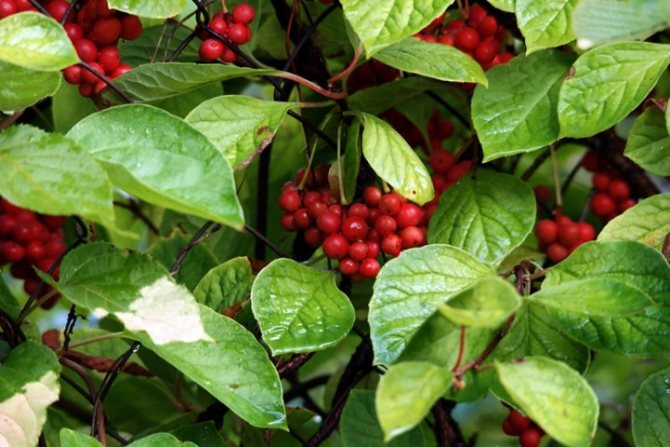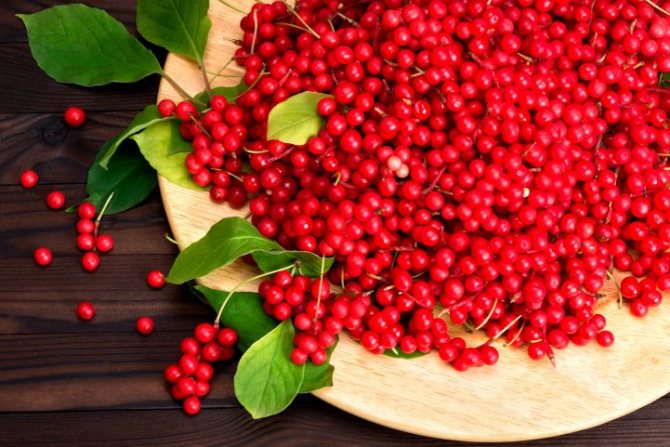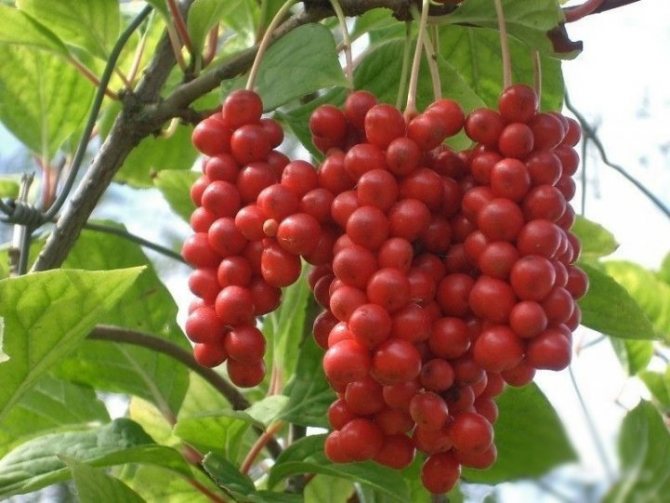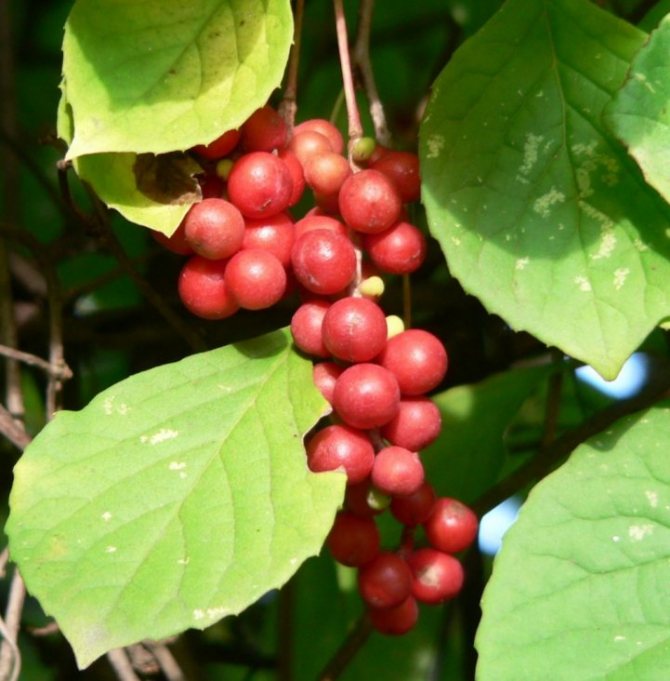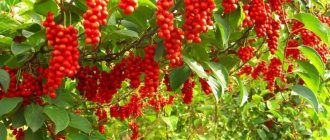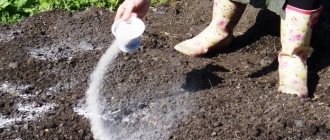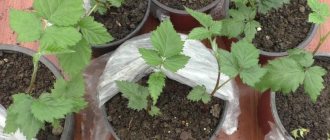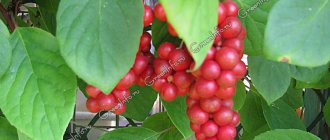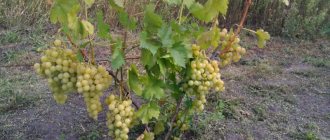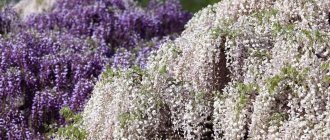Growing schisandra chinensis and caring for it has its own characteristics, some of which are inherent directly only to this plant. In order for the plant not only to please the eye with its elegant vines, but also to give many useful and tasty berries, you need to carefully carry out all the prescribed agrotechnical measures.

Fruit-bearing Chinese lemongrass in all its glory
Description of the plant lemongrass chinese
Directly the trunk of Schisandra vine reaches a thickness of 2.5 cm. Young shoots extend from the trunk in different directions. Serrated leaves are held on red, pink cuttings. They are dense and can radically change color throughout the season. At the very beginning in spring, young leaves have a light green tint, the inside is gray. In summer, the color remains green; by autumn, lemongrass dresses in yellow foliage.
During the flowering period, the entire liana is covered with white flowers. By autumn, in place of the flowers, rounded fruits are formed. They are collected in clusters up to 10 cm long. The Chinese liana has a characteristic citrus aroma. The smell is exuded by fruits, leaves with shoots. The characteristic scent gives the garden a tropical atmosphere.
Appearance
First of all, it is worth talking about the appearance. It is quite unusual: most of all, the plant resembles a liana. Moreover, in warmer climates, its length can reach ten or even fifteen meters! True, in the harsh Moscow region with relatively short summers and cold winters, the plant rarely exceeds four meters. The stem is thin (about two centimeters). The bark is wrinkled, dark brown. Liana twists around almost any suitable object, from a tree growing nearby to a long cord or stake.


The leaves are large, about three to five centimeters wide and up to ten centimeters long.
The flowers are not too large, about one and a half centimeters in diameter, they have a pronounced aroma. The color is predominantly white, but turns pink by the end of flowering. Collected in fairly large inflorescences.
After the end of the flowering season, they turn into small berries, which acquire a deep red color as they ripen. They taste bitter-pungent with a pronounced aftertaste of spice.
Lemongrass Chinese in landscape design
Schisandra chinensis in the photo, as in life, looks luxurious. In addition to its medicinal properties, landscape design professionals and amateurs know about the decorative purpose of Chinese magnolia vine.
More often, the plant is used for its intended purpose - like a liana. Lemongrass creates weaving on walls, arches, in gazebos, on the body of buildings. The green arch will cheer you up, decorates any area. A pleasant aroma will create a special atmosphere in the garden area.
Often with the help of a plant, terraces and gazebos are shaded. Use weaving to create a hedge.
Plant varieties
A large number of varieties of lemongrass are known, since breeders have worked on its frost resistance, disease and pest resistance. As a result, gardeners and landscape designers have a rich choice. Each variety has advantages and some nuances, but in all the variety there are also the most popular varieties of creepers. Most of them have stood the test of time, are easy to care for and are very resistant to pests and diseases.An important factor is the yield parameter.
Schisandra Chinese Firstborn
The firstborn is a Chinese lemongrass bred in Russia. This is a monoecious liana, the height of which does not exceed 2 m. Up to 45 berries are collected in a cluster. The fruits have a sweet and sour taste and a round shape. The leaves of this variety are elliptical, the denticles on the sides are sparse with sharp ends. The Firstborn blooms with white flowers with a delicate pink tint.
This variety of Chinese lemongrass can be harvested in late August and early September. This is one of the most common varieties for Russia. Domestic breeders bred Pervenets, focusing on climatic conditions, moisture and soil quality. Chinese lemongrass Pervenets is a frequent visitor to garden plots near Moscow. It tolerates winter well.
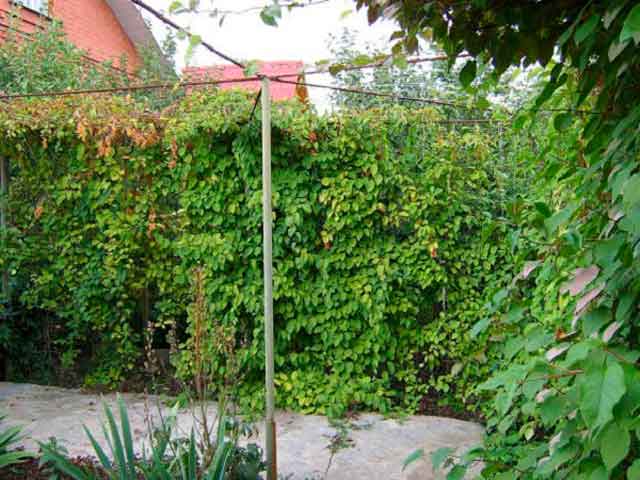

Schizandra Chinese Schizandra
This is a classic Chinese lemongrass, which was cultivated in the Ancient East. The length of the vine is up to 15 m. The root system of Shizandra is very branched, although it rarely extends beyond the crown. The trunk is strong, not brittle, the bark on an adult plant is dark brown, the buds are small or medium in size, dark brown in color. Most often, Chinese lemongrass is a dioecious plant. This means that there are male and female specimens. This is important to know to get the harvest.
Schisandra Chinese Delight
Woody liana. This variety is distinguished by its later ripening. The crop can be harvested even in October. Therefore, the plant is not always suitable for the northern latitudes of our country. The Chinese Schizandra Delight begins flowering in May and lasts for several weeks. The flowers have a pleasant citrus scent.
Plant height - up to 15 m. Productivity from one bush - 4-5 kg of pleasant sweet and sour berries of a round shape. The weight of one lemongrass berry is about 5 g.
How to grow Chinese lemongrass from seeds
For Chinese magnolia vine, growing in the middle lane is not difficult. There are several methods for breeding. You can buy seeds right away and just plant them using a proven algorithm.
Seeds should be stratified first. Stratification - keeping seeds in moist sand at cool temperatures. To begin with, the temperature should be + 18 ° С for a month, at the second stage, the indicators are reduced to + 5 ° С, they also withstand a month, and in the third month the temperature is slightly raised to + 10 ° С.
Planting is carried out in June, directly into the open ground or in a greenhouse, depending on the climatic conditions of the region. After the appearance of the first three leaves, the seedlings dive. Watering the sown lemongrass is necessary only on hot days and, moreover, in the morning.
A young lemongrass should be planted in a permanent place after the first wintering in the spring. It is better to cover young seedlings for the winter if they are not in the greenhouse.
Reproduction methods
When lemongrass has already taken root well on the site and has begun to bear fruit, you can think about its reproduction, since the purchase of seedlings is quite expensive.
Did you know? In the medicine of the East, according to the assessment of medicinal properties, lemongrass ranks second after ginseng.
The main breeding methods:
- Cuttings - can be produced after the first year of fruiting. After flowering, a green lateral shoot with three buds is taken from one of the shoots. They put it in water and wait for the roots to appear. After that, they are planted in a container and care for the plant at home until it is strong enough for planting in open ground. This will take about 3 years.


- Seeds - the method is used very rarely, since it requires a lot of energy and a lot of time. Seed germination is no higher than 60%.
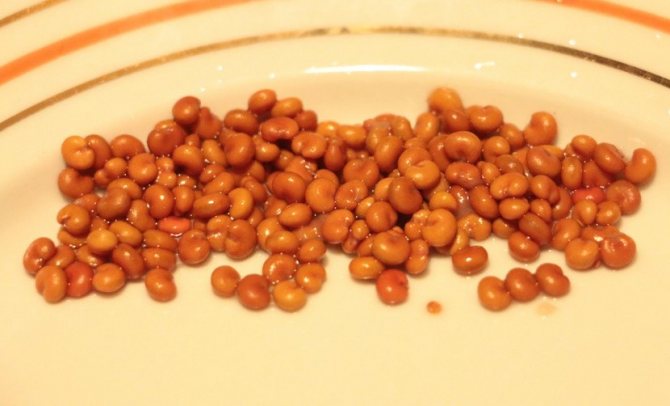

- Layers - the simplest breeding technique. For its implementation, one side lash is bent to the soil, pinned with a staple and sprinkled with a layer of peat mixed with compost.Throughout the season, care is taken as for an adult plant. A year later, they are separated from the maternal liana and transplanted to a prepared place.


- Root shoots - also not a very difficult breeding method. The first root shoots appear in the second year after planting. At this stage, I do not remove them, but are separated with a shovel from the mother plant along with the adventitious root. Then, for growing, they are placed in a moist substrate consisting of turf soil, peat, compost. This takes about a year. Then they land in open ground.
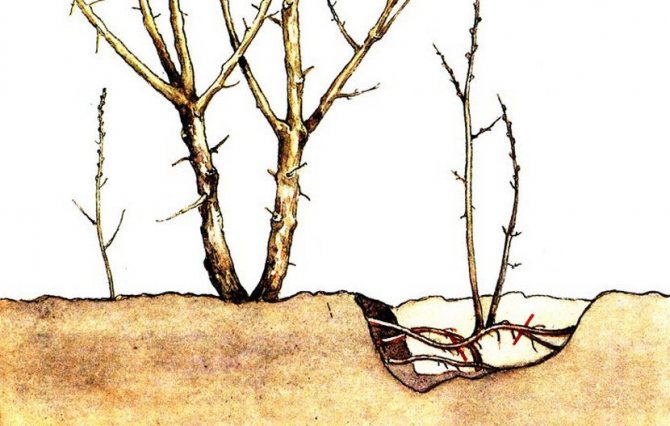

- By dividing - carried out when an old bush needs to be planted or moved to a new place. Having dug up the plant, it is divided into several parts, focusing on the size of the root. Each specimen should have a sufficient number of adventitious roots for normal survival. The resulting planting material is immediately planted in prepared places.
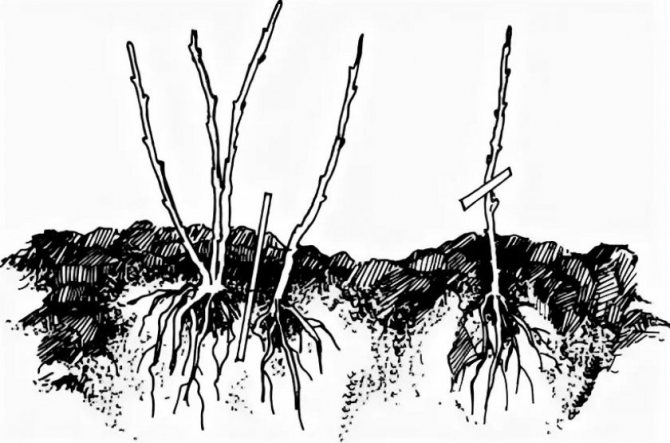

Schisandra chinensis is a very valuable medicinal and ornamental plant. Its unpretentiousness and high frost resistance allows cultivation even in the climate of Siberia. The main thing is to take into account all the nuances of agricultural culture.
How to plant Chinese lemongrass with seedlings
Growing vines from seeds is troublesome and not always effective. Germination rate can be no higher than 60%. Therefore, the most popular simple planting method is seedlings. They are purchased in special nurseries or multiplied by gardeners on their own.
Important! The root system of the seedling should be healthy, strong, roots without signs of mold or rot.


Landing site preparation
When choosing a site, you should pay attention to the illumination. Lemongrass loves sunlight, but feels great in the shade of the trees that it braids. It is important that the shadow should not be strong. Optimum - a semi-shady area, since direct sunlight, especially when irrigated by rain, can cause burns.
When planting near the wall of the house, the distance from the seedling to it should be about 1.5 m.If you plant the vine closer, it will destroy the roof of the building, the flow of water from the roof will have a bad effect on lemongrass and the health of the plant.
The distance between the seedlings should be about a meter. If it is less, then the shoots will quickly intertwine with each other, the shrub will become too thickened, and this will cause a decrease in the yield of the vine. Such growths will look sloppy.
Humus, sod soil, compost, and ash are used as a nutrient mixture for planting Schisandra chinensis. Take all components in equal quantities.
Preparation of seedlings
The optimal seedlings for planting are 2-3 years old. At this age, the planting material is low, strong enough. Able to survive the first winter and take root.
As a result, you get a healthy, strong plant. When choosing a seedling, you need to pay attention to the root system. Only healthy, developed roots can take root.
Important! The vitality of the correct selected seedling is maximum, such material always takes root, does not cause trouble for the owner when planting, leaving, harvesting.
When buying, you should pay attention to the fact that the seedlings are with soil. The root system should be kept in a coma in a cool place. Before planting, the roots should be dipped in a clay mash.
Landing rules
In Siberia, in the Urals, Schisandra chinensis is planted in the spring, in the southern regions - in October. A hole is dug 60 cm wide, 40 cm deep. A 10-15 cm drainage layer must be laid on the bottom. Pebbles or crushed stone are used by gardeners. The prepared nutrient mixture is poured over the drainage. Set the seedling.
The roots should be carefully straightened, and the nutrient mixture should be poured on top. Tamp the ground, then water.When the water is absorbed, it is recommended to make a layer of mulch from peat or humus on top around the seedling. The first time after planting, it is better to protect the plant, water it regularly.


Fruit picking
Lemongrass grown by a seedling begins to bear fruit only after 3 years, that is, at the age of 6 years. You can pick berries when they get bright carmine red color... Ripe fruits are soft and transparent. The berries are torn off along with the stalks, which also contain useful substances. The stalks are crushed and dried for further use in tea, which becomes more aromatic.
Schizandra berries are characterized by rapid fermentation, so they are processed immediately after harvest or the next day.
Some people prefer to dry the fruits so that a large number of berries are not wasted. Drying takes place first in a well-ventilated place on a free surface (3-4 days), then in the oven. Dried fruits practically do not lose their healing properties. For them, hermetically sealed containers are purchased, in which they are stored for no more than two years.
Chinese lemongrass care
Caring for Chinese lemongrass is not difficult, since liana is an unpretentious plant. But here there are nuances of watering, feeding, preparing for winter. It is better to know and take into account such little things so that the yield and appearance of the plant are not affected. Despite its exoticism, Chinese lemongrass has shown itself to be a picky plant.
Watering mode
Chinese magnolia vine is considered to be more of a tropical crop, and therefore it tolerates moist soils better. The vine should be watered regularly, since it needs moisture constantly, despite the horizontal arrangement of the roots. It is recommended to water lemongrass at the rate of 6 buckets for each vine.
The best option is rain-type irrigation. It is recommended to do this in the evening or at night, so that the sun does not burn the watered leaves. If you water the vine with buckets, then it is recommended to do this with warm or settled water. Root watering can be carried out in the daytime. This method of watering is most effective for young plants and seedlings. In order for the root zone not to dry out, after watering, peat or humus is laid around the vines.
How to feed Chinese lemongrass
Schisandra chinensis grows in the garden both for decoration and for obtaining a healing harvest. But feeding an exotic plant is required in any case.
The vine should be fed several times a year. Each specific case requires its own type of fertilizer.
When the liana is 3 years old, the first feeding is carried out in the spring. To do this, saltpeter is poured into the trunk circle. Enough 30 g, then mulch.
A few months later, in the summer, fertilizing is carried out with organic fertilizers. For this, chicken manure or cow dung is used. Mullein is bred in a ratio of 1:10, and chicken droppings are 1:20. Top dressing is carried out several times over the summer with a break of 3 weeks. Organic fertilizers are applied at the root with the obligatory subsequent watering of the vines.
In the fall, after the shrub has given up the leaves, they are fertilized with superphosphate and wood ash.
A separate fertilization regime exists for fruiting liana in order to increase its yield:
- in the spring, nitroammofosk is introduced 4-40 g per sq. m;
- after flowering - a bucket of chicken droppings for each shrub;
- in the fall - superphosphate and sulphate stone.
Once every 3 years, compost should be poured 8 cm deep into the root zone.
How and when to prune Chinese lemongrass
The first pruning of lemongrass is carried out at the age of two years after planting. It is recommended to leave only 5-6 shoots, and cut off the rest at soil level.
It is best if pruning is done in October after the vine has shed its leaves.If the shrub is very neglected, then pruning is carried out in the month of July.
In the spring, root shoots are removed, and sanitary pruning is also carried out. With sanitary pruning, Chinese magnolia vine is deprived of all sick, dry, frozen shoots.
Preparing for winter
Chinese schisandra, when planting and caring, also needs to be prepared for the winter period. Young, immature plants especially need preparation for cold weather. Such shoots should be covered, especially in cold regions. A layer of leaves and spruce branches are used as a cover.
Older plants do not need shelter as they can withstand frosty winters.
Healing properties
Any plant is unique, but lemongrass is a storehouse of useful substances. Berries are able to replace the home medicine cabinet almost completely, and also have a positive effect on the body during physical or mental overload, fill the body with strength and vigor. Leaves and seeds (seeds) of Schisandra chinensis are equally beneficial. The fruits and leaves of schizandra contain macro- and microelements, vitamins, fatty and organic acids, tannins (tannins) and tonic (lignans) substances, pectins, essential oils, and sugars. Official medicine recognizes the therapeutic effect of lemongrass in the following cases:
- stimulation of the central nervous system;
- increased visual acuity, especially twilight and night;
- normalization of the cardiovascular system, respiratory system;
- restoration of normal functioning of the genitourinary system;
- lowering blood sugar levels;
- wound healing.
Interesting! During the Great Patriotic War, Schizandra berries were an obligatory part of the rations for military pilots, since they sharpened night vision and toned the brain and body without unpleasant consequences.
Traditional oriental medicine is more widely used by schizandre:
- increased immunity;
- treatment of acute respiratory infections and colds;
- therapy of skin diseases;
- removal of toxicosis during pregnancy;
- overcoming climacteric disorders.
Lemongrass-based preparations and the plant itself are classified as potent agents. They are used under the supervision of the attending physician.
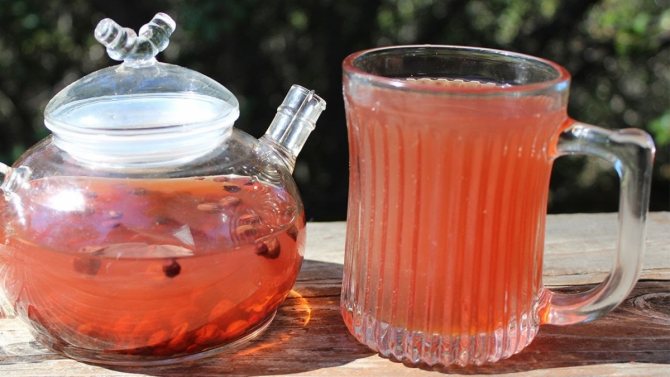

Photo: screenshot <>
Categorical contraindications:
- hypertension;
- insomnia;
- stomach ulcer;
- liver disease;
- epilepsy;
- lactation period;
- individual intolerance.
As a potent remedy, lemongrass often causes side effects in the form of tachycardia, increased blood pressure, sleep disturbances, and headaches. Since the berry can either increase or decrease blood pressure, it is necessary to take medications based on it with caution.
Features of planting and caring for Chinese magnolia vine in Siberia
Siberia is characterized by cold, long winters with deep snow cover. The main difference from growing in other regions is that even adult plants need shelter. Preparation for winter is carried out earlier than in other regions. Sawdust, leaves, peat are used for shelter, and snow is directly on top.
It is important to remove all shoots from the trellis. In the spring, the processes that are frozen must be cut off. It is recommended to plant seedlings in Siberia in the spring. The optimal period for planting is on a cloudy April day, when the threat of frost return has passed. Mulching of seedlings is required. When planting by seed, it is recommended to harden the seedlings in advance.
Features of planting and caring for Chinese magnolia vine in the Urals
The frost resistance of Chinese magnolia vine is fixed at -40 ° С. Therefore, an adult plant, like a young one, survives the Ural winters easily, but shelter is still required.
In the Urals, there are nuances when planting vines. Planting Schisandra chinensis in autumn is not recommended in the region. It is optimal to plant a seedling in the spring, when the threat of frost passes. By the fall, it takes root and, when covered with spruce branches, calmly endures the winter.


Tincture and decoction recipes
Lemongrass decoction
A teaspoon of berries and green mass of the plant is poured with a glass of water, boiled and well defended. The broth is filtered.
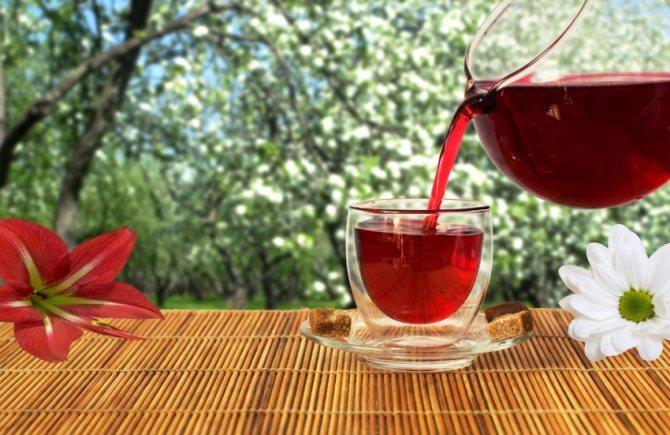

Chinese lemongrass tincture
Grind 100 g of dried berries, pour 1 liter of alcohol and leave to infuse for one week in a warm and dark place. Strain the broth.
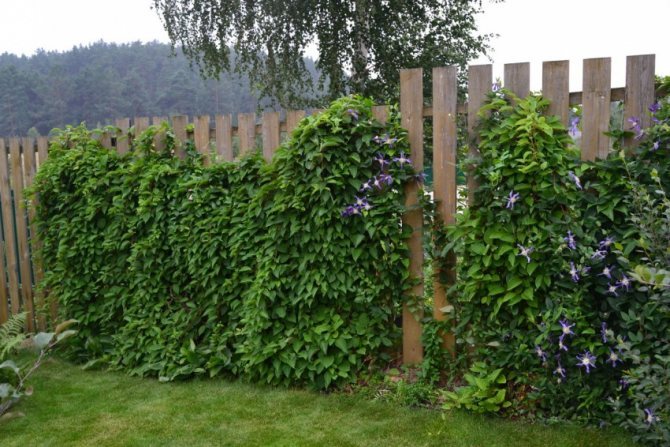

Why Chinese lemongrass does not bear fruit
Liana's lack of fruiting can be due to a number of reasons:
- the plant has too many offspring, they do not allow the liana to bear fruit in normal mode;
- too acidic soil, poorly fertilized when planting;
- lack of watering;
- lack of care and garter: liana needs trellises, if it is not tied or cut off, then it may not bear fruit for several years;
- the plant is planted in strong shade;
- the presence of pests or diseases.
Schisandra chinensis is a monoecious plant that has both male and female flowers. In this case, the pollen falls from top to bottom. The higher the trellis is lifted, the better the vine will bear fruit. The optimal height is considered to be 5 m. Too thick liana will also not be able to bear fruit normally, therefore gardeners recommend paying attention to regular pruning of Chinese magnolia vine in the fall.
Schizandra chinensis diseases and how to treat them
The Chinese liana is resistant to diseases. The plant does not get sick with proper care. A purchased seedling can bring the disease to the site. Creepers have a Chinese disease that spreads with improper care. The most dangerous disease is fusarium leaf wilting. If the disease has appeared, the plant cannot be treated. It is completely removed from the site, all shoots are burned.


Chinese liana is sick:
- powdery mildew;
- black spot.
Both diseases are treated by treatment with special preparations and the obligatory removal and burning of already infected leaves. The best option for processing vines is 1% Bordeaux liquid.
In the presence of powdery mildew, experts recommend spraying the liana with a solution of 0.5% -calcined soda and ground sulfur. It is advisable to repeat it several times with a break of 2 weeks.
In order to prevent lemongrass from becoming infected with fusarium when planting using seeds, it is recommended to disinfect them with a 5% formalin solution.

